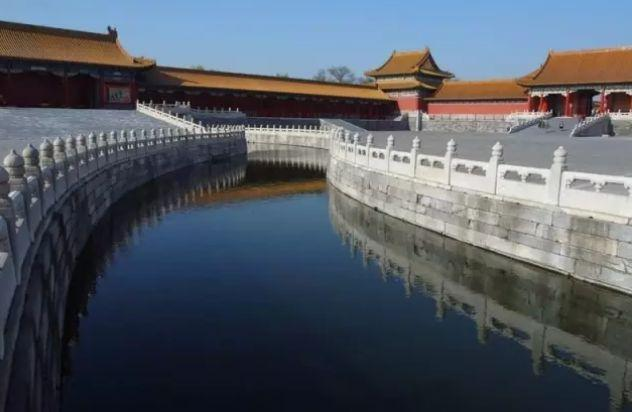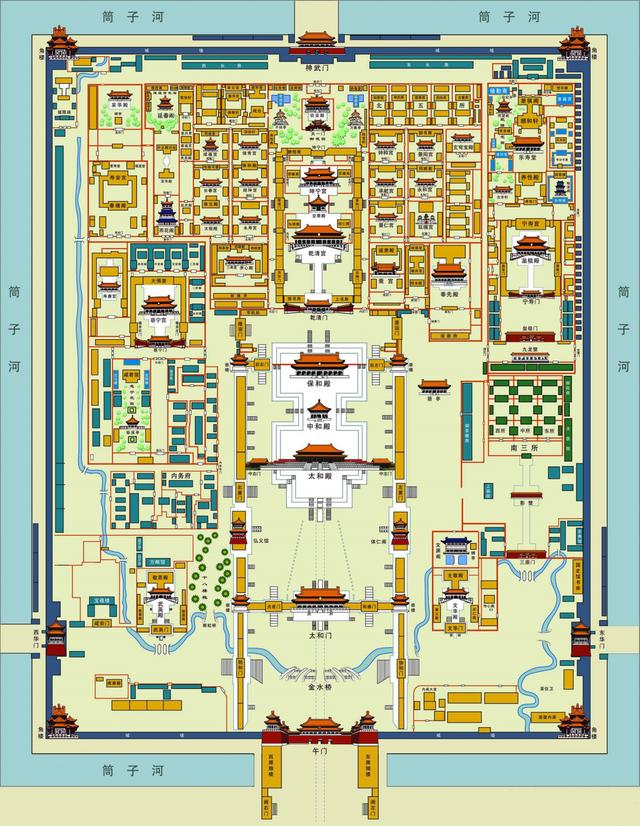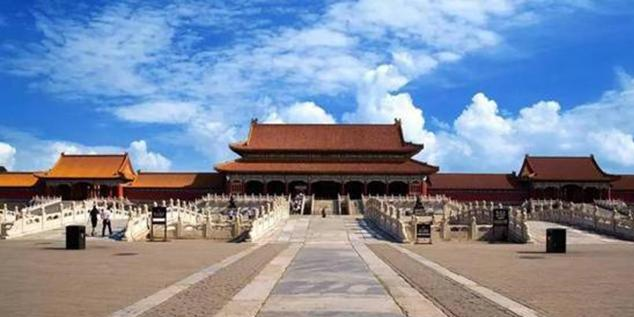Fortunately, why not water for the Forbidden City for more than 600 years?
Author:Chinese water Time:2022.07.31
On July 27th, Beijing ushered in the "Qianlong Tomple Water" wonderful scenery in the Forbidden City of the Forbidden City of the Palace Museum on the red wall and tile eaves of the Forbidden City. However, there have never been a push -drainage system that has never entered the public vision again because of excessive rainwater embolism because of excessive rainwater.
Mystery 1: Follow the terrain with a slight slope
The ground of the Forbidden City conforms to the geographical environment of the Beijing region. This has created favorable conditions for natural drainage, so that the stagnant water can be excreted slowly.

Neijin Shuihe
In addition, the drainage ditch in the Forbidden City leads to the Jinshui River, and the Jinshui River is connected with the moat around the Forbidden City to eliminate the rainwater of the Forbidden City.
Mystery 2: Minggou Dark Glit
After overall planning, the design has created a huge artificial drainage network that combines the primary and secondary, bright and dark combination.

The drainage system of the Forbidden City is divided into three categories, namely building drainage, surface runoff, and underground dark grooves. When the rain falls, some rainwater falls to the building, falling along the glazed tiles on the roof of the building to the ground, and then the rainwater will flow along the Ming ditch to the underground dark ditch; there are also some rainwater forming the floor runoff directly, and the slope of the ground flows into the courtyard and the house and the house. If there are steps or buildings around the stone trough around the base, the rainwater passes through the "ditch" and imports into the dark gap. The underground dark groove is criss -crossed, and there are all directions. After the rainwater is discharged into the dark groove, the branch ditch is gathered to the dry groove, and the inner Jinshui River is discharged into the inner Jinshui River through the dry ditch. It is reported that from 2014 to 2015, when the Palace Museum Cing Palace, Shoukang Palace, and Cining Garden were opened for maintenance, the rainwater systems in the three areas were also carried out overall maintenance and repair. Nowadays, the Forbidden City will be touched at a fixed time every year.
Mystery 3: "Thousands of Dragons Out of the Water" never accumulate

The Taihe Hall, Zhonghe Temple and Pahe Hall are arranged front and rear, located on a 8 -meter -high "worker" -shaped table foundation. The base area of the platform is 25,000 square meters, which is divided into 3 floors. There are small holes on the bottom of each of the piles around the stone railings around the base. There is a beautifully carved stone faucet under each looking pillar, called "螭 螭 台". The "Shou" has a penetrating round hole in the mouth, which can help drainage. At the time of heavy rain, the 1142 faucets on the three -story base were 1142 drainage holes. The landscape of "Qianlong vomiting water" was not only quite magnificent, but also the rainwater on the table was quickly exhausted.
Mystery 4: Quanshigou canal is strong and durable

Many of the bright and dark rainwater ditches in the Forbidden City are made of all -stone manufacturing, which are strong and durable. Of course, there are also some mixed masonry mixed or bricks. Today, in the past maintenance and investigation, it is found that the damaged components have been replaced in time to ensure that the drainage in the heavy rain is smooth.
Mystery 5: Rain and pollution separation improvement function
Today, with the increase and strengthening of the social functions of the Forbidden City, while protecting and retaining the original rainwater system, it is necessary to continue to build and improve the sewage discharge system to achieve the construction of rain and diversion and drainage systems. At present, the internal drainage system of the Palace Museum has formed two sets of drainage systems with separation of rain and sewage. The sewage system is a separate pipeline connected to the municipal pipe network. The drainage system is only used to discharge rainwater.

In addition, while the Palace Museum combines ancient and modern drainage systems, it has continuously strengthened management and guarantee. The first is to formulate a flood prevention plan to ensure that full -time personnel are in place and prepare for dredging tools in order to eliminate blocking points at any time. The second is to strengthen contact with the Hehu Management Office of the Beijing Municipal Water Affairs Bureau to ensure smooth communication and adjust the water level of the Jinshui River in a timely manner.
The drainage system for the Forbidden City can withstand the test of heavy rain because the ancient drainage system has precipitated the "craftsmanship spirit" inherited from generation to generation. The rainfall weather at all levels of the water conservancy system bite the teeth and keep all efforts to improve the defense capacity of water and drought disasters to maintain rivers and water conditions to ensure the safety of the people's lives and property
Comprehensive sorting and review of Chinese aquatic affairs 丨 Chen Rui produced 丨 Fan Yanzhi's case 丨 Zhou Nianchen Li Li blame 丨 Li Li school against Deng Wanying
- END -
Zhejiang's film "Lone Moon" box office breaking 400 million "torn content" is worth watching

Zhejiang News Client reporter Shen LianyuDirected by Zhang Yuyu, the Zhejiang -pro...
Typhoon "Fireworks" and Hurricane "Aida" storm value forecast and analysis based on the Typhoon Fireworks and Hurricane "Aida"

Typhoon Fireworks and Hurricane Aida storm value forecast and analysis based on th...